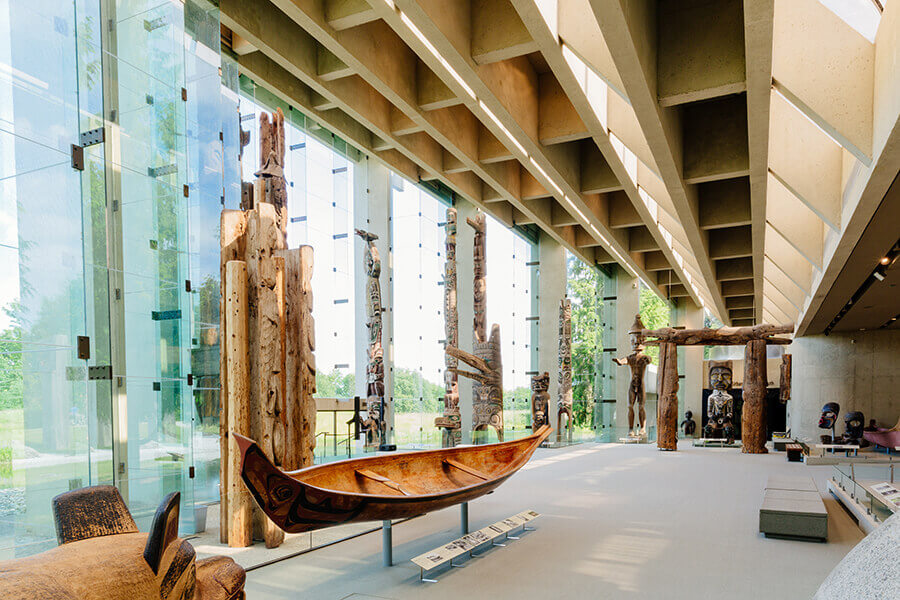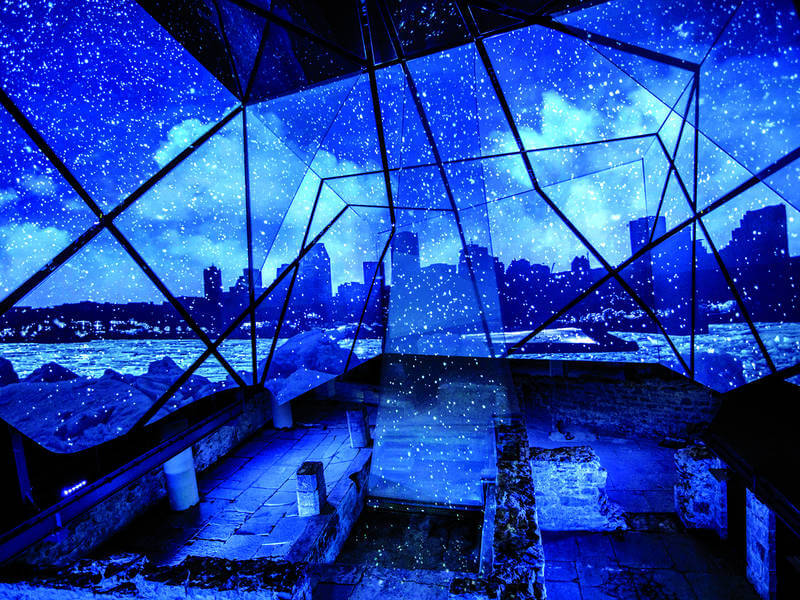Giving your intellect (rather than your feet) a workout by delving into a destination’s culture, art, and history through its museums is a terrific way to explore it. These museums are among the greatest in the country whether you want to learn more about Montreal’s rich (and unexpectedly long) past, love art exhibitions, or are interested in Canada’s First Nations people.
Winnipeg, Manitoba: Canadian Museum for Human Rights

The Canadian Museum for Human Rights is the world’s only museum of its sort, promoting human rights through respect, understanding, and dialogue. The exhibitions use unique storytelling techniques to fascinate and inspire visitors of all ages to consider the universal battle for human dignity and equality. Guests can engage with varied narratives of survival, resistance, and resilience through art, videos, antiques, mixed media, and more. The alien architecture of the structure is as emotionally evocative as the displays within, with an undulating cloud of glass that wraps around one side of the building and replicates the dove’s wings.
Museum of Anthropology at the University of British Columbia, Vancouver, BC

The MOA in Vancouver is an excellent place to learn about British Columbia’s Indigenous history and culture. While the museum was designed to foster knowledge and understanding of world cultures, it specializes in the province’s First Nations peoples, particularly the Haida. The carvings, totem poles, and artifacts on display at the MOA are among the greatest in the world. The collection is housed in an award-winning, beautiful structure with floor-to-ceiling windows that provide breathtaking views of the surrounding countryside. The Raven and the First Men, a sculpture by Haida artist Bill Reid, is undoubtedly the museum’s showpiece, depicting the Haida narrative of how Raven discovered the first humans in a clamshell and enticed them out into the world.
Canadian Museum of Immigration at Pier 21, Halifax, Nova Scotia

At this one-of-a-kind institution, visitors walk in the footsteps of history. Few museums in Canada are as atmospheric and historically significant as the Canadian Museum of Immigration at Pier 21. It is located in the national historic site in the Halifax harbor, where approximately one million immigrants arrived to make Canada their home between 1928 and 1971. First-person stories, artifacts, and photographs present visitors with an engaging, intimate look at the immigration experience. They are intended to provide all visitors with a deeper knowledge of how immigrants helped form Canada and countries around the world.
Royal Ontario Museum, Toronto, Ontario

Even if you’re not a big museum person, you won’t want to miss a visit to the ROM. The ROM’s attraction is enhanced by its stunning architecture, which appears to be a gigantic crystal that fell from the sky onto an old limestone building. It is the country’s largest and most visited museum, showcasing art, culture, and the natural world. It is home to nearly 13 million art artifacts, natural history specimens, and 40 galleries and exhibition spaces. Guests can learn about dinosaurs, appreciate ancient Egyptian artifacts, and follow the rise and fall of civilizations thanks to a wonderful mix of temporary and permanent displays.
Royal Alberta Museum, Edmonton, Alberta

This substantially renovated museum is Western Canada’s largest. The Royal Alberta Museum contains over 75,000 square feet of galleries and millions of artifacts highlighting the province’s rich natural, cultural, and human history. In the military and political history collection, you can see tools from people who lived in Alberta over 10,000 years ago, learn about the immigrant populations that helped shape the province’s identity, and find stories of Albertan bravery. Indigenous stories can be found across the human history galleries, including one devoted to modern First Nations and Métis storytelling, culture, and history. The province’s creepy crawly denizens have not gone unnoticed; the Bug Gallery, complete with hatchery, houses a collection of spiders, insects, and other invertebrates from around the region and beyond.
Remai Modern, Saskatoon, Saskatchewan

Remai Modern, one of Canada’s newest museums, has quickly established itself as one of the country’s top contemporary art collections. It debuted in 2017 on the banks of the pastoral South Saskatchewan River to showcase the works of both regional (with a special focus on contemporary Indigenous artists) and international artists. Remai is home to the world’s most extensive collection of Picasso linocuts and over twenty rare Picasso ceramics. The museum also hosts a series of rotating shows, including the most complete exhibition of legendary art dealer Ileana Sonnabend’s collection in North America in October 2019. Make a reservation at the museum’s restaurant Shift, which serves a modern take on traditional Prairie fare.
Pointe-à-Callière Montréal Archaeology and History Complex, Montreal, Quebec

Canada, which celebrated its 150th birthday in 2017, is widely viewed as a young country. Nonetheless, French explorers outpaced the British and established cities long before English Canada was born. As Canada was celebrating its 150th birthday, Montreal was commemorating its 375th—that’s a lot of history to discover! At Pointe-à-Callière, visitors can learn about the city’s illustrious past. Montreal’s intriguing evolution is brought to life here through entertaining multimedia displays and actual artifacts dating back to the city’s founding. Families with children will enjoy the Archaeo-Adventure class, which allows them to participate in a simulated archaeological dig.
Canadian Museum of Nature, Ottawa, Ontario

Of course, when visiting a new place, it’s also necessary to get to know its wild side. The Canadian Museum of Nature’s world-class galleries will take you through the country’s natural history. Guests will enjoy dramatic dioramas featuring spectacular, life-sized models of predatory Daspletosaurs poised to chow down on a herd of herbivorous Chasmosaurs in the Fossil Gallery. The Mammal Gallery features classic Canadian species such as grizzlies and bison, while the Canada Goose Arctic Gallery allows visitors to relax while learning about the quickly changing Arctic.
